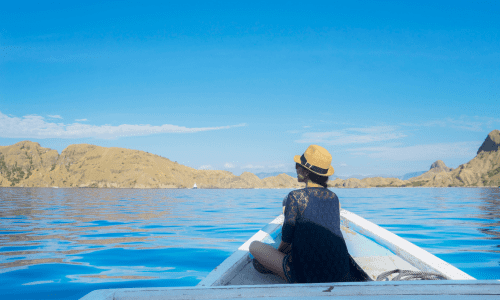Nautical photography: capturing the beauty of the sea from your boat
Introduction to nautical photography
Nautical photography is a unique art form that combines a passion for sailing with a love of photography. Aboard a Crownline vessel, you will not only experience the freedom of the sea, but also have the opportunity to capture breathtaking images of the vast ocean, marine life, and coastal landscapes. In this article, we’ll guide you through the essentials of nautical photography, from selecting the right equipment to advanced capture and editing techniques.
The perfect equipment for nautical photography
Choosing the right equipment is essential for nautical photography. While a smartphone camera may be sufficient for beginners, those serious about their craft should consider investing in a DSLR or mirrorless camera. Look for cameras with good autofocus capabilities and water resistance. Lenses should be versatile; a good zoom and wide-angle lens are a must. Also, consider carrying a sturdy tripod to stabilise your shots and a waterproof case to protect your equipment from splashes of water and moisture.
Understanding light at sea
The golden hour and the blue hour
Lighting is crucial in photography, and in the sea, it is even more significant. Golden hour provides soft, golden light, ideal for capturing the glow of sunrise or sunset over the water. During blue hour, the sky takes on a deep blue hue, creating a dramatic backdrop for your photographs. These times of day are perfect for capturing evocative images that highlight the tranquillity and majesty of the marine environment.
Playing with reflections and shadows
Water is a natural mirror that reflects light from the sky, clouds, and surrounding objects. Learn how to use these reflections to add depth and dimension to your photographs. Shadows cast by your boat or elements on the deck can create interesting contrasts and bring out the texture of the water. Experiment with different angles and positions of the sun to capture unique and captivating images.
Photography techniques at sea
Action and motion capture
The sea is full of action and life. From water sports to marine life in motion, there are countless opportunities to capture the excitement. Use a fast shutter speed to freeze motion, capturing every drop of water in the air or the agile flight of seabirds. Experiment with different settings to capture the essence of movement in the sea.
Composition and perspective
Composition is vital in nautical photography. Try different angles and viewpoints to find the perfect composition. Photographing from the deck of your Crownline can offer unique perspectives, such as views of the horizon or rising angles of the water crashing against the hull. Use the rule of thirds to balance the elements in your photos and guide the viewer’s eye through the image.
Editing tips for nautical photography
Once you have captured your images, post-production is essential to enhance their beauty. Adjusting exposure, contrast and saturation can intensify the colours of the sky and sea. Editing can help correct the white balance or bring out certain aspects of your photographs, such as the clarity of the water or the texture of the clouds. Tools such as Lightroom or Photoshop are ideal for this purpose.
Exploring marine life through your lens
Discovering the underwater world
Beyond the surface of the sea, there is a whole world waiting to be explored and photographed. Underwater photography allows you to capture the essence of marine life, from exotic fish to coral formations and shipwrecks. Invest in an underwater housing for your camera and explore the depths. Underwater photography requires special considerations, such as lighting and buoyancy, but the results can be stunning.
Respecting the marine ecosystem
When photographing marine life, it is essential to do so with respect and care. Avoid touching or disturbing marine wildlife. Keep a safe distance from the animals so as not to stress them. Remember, you are in their natural habitat. Nautical photography should be a responsible practice that promotes the conservation of the ocean and its biodiversity.
Tips for keeping your equipment safe at sea
Protection against water and salinity
The marine environment can be tough on photographic equipment. Protect your camera and lenses from salt and moisture with waterproof cases and sealed cases. After each session, clean your equipment carefully to remove any salt residue. Silica bags are excellent for absorbing moisture in your camera bag.
Safety on board
Keeping your equipment safe on board is crucial, especially in rough sea conditions. Use straps and tethers to secure your camera and other accessories. Make sure all your equipment is well stored and protected when not in use to avoid damage due to the movement of the boat.
Taking inspiration from the sea
Stories to tell
Every photo you take at sea tells a story. It could be the tranquillity of a sunrise on the ocean, the strength of an approaching storm, or the joy of your loved ones enjoying the journey. Look for those unique moments that capture the essence of your experience at sea. It is these stories that make every photograph special and memorable.
Connecting with other nautical photographers
Connecting with a community of marine photographers can be incredibly enriching. Participate in online forums, attend workshops and meetings, and share your experiences and learnings. Learning from other photographers can give you new perspectives and techniques that you can apply to your next photographic adventure.
In conclusion, nautical photography is an exciting adventure that combines a passion for the sea with the art of capturing images. From the tranquility of a seascape to the excitement of marine life, every photograph is an opportunity to tell a unique story. And if you’re looking for the perfect boat for your photographic adventures, don’t forget to consider purchasing a new Crownline boat. With its sleek design, exceptional comfort and superior performance, a Crownline is the ideal companion for your photographic expeditions at sea.

